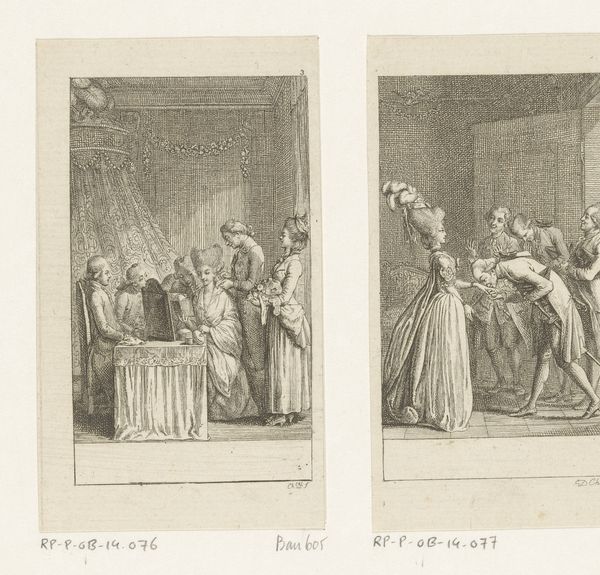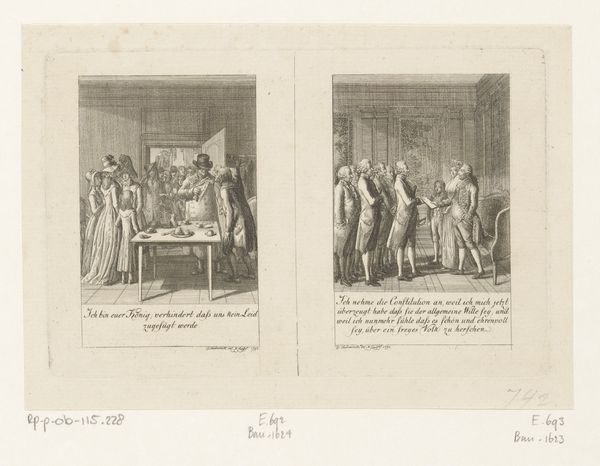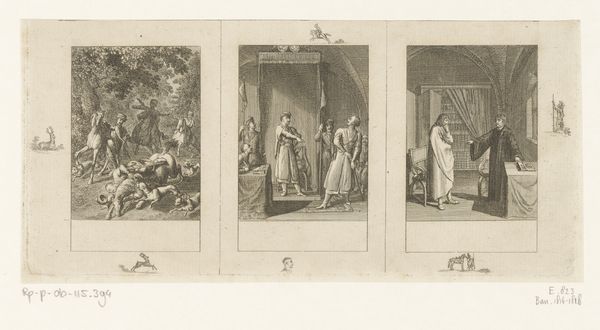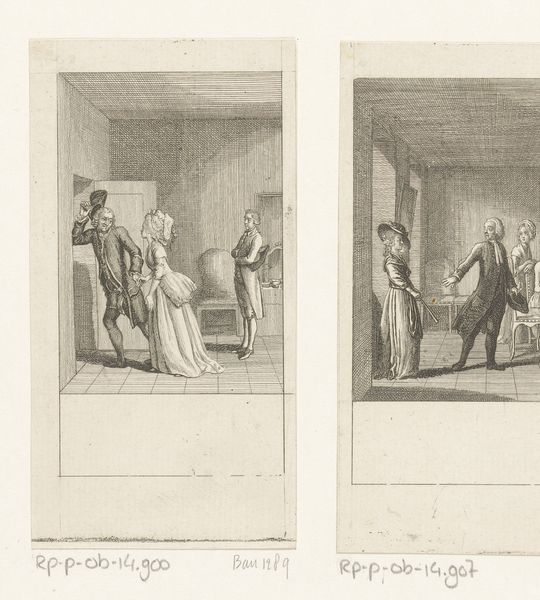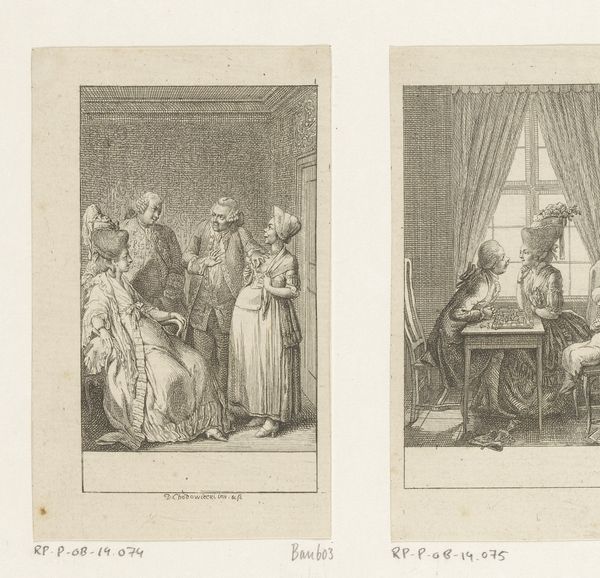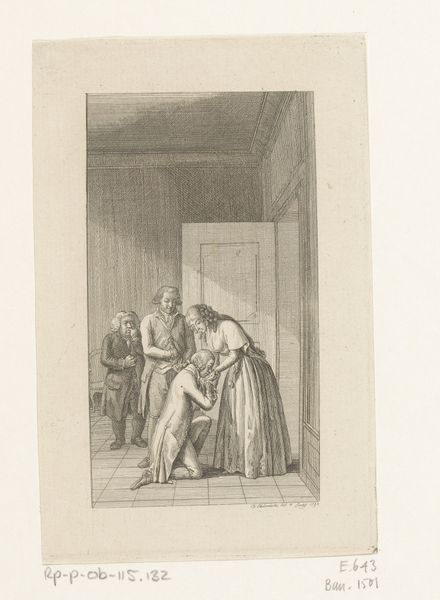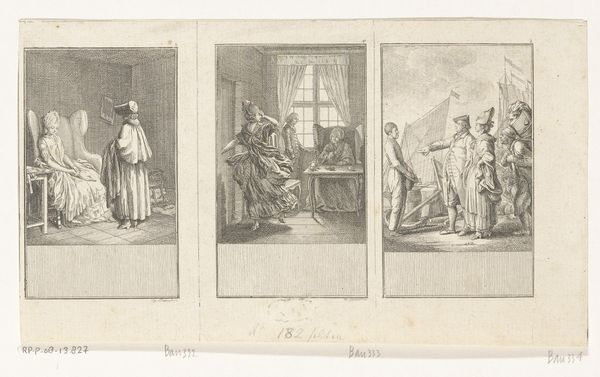
Twee scènes uit Leben, Bemerkungen und Meinungen Johann Bunkels 1778
0:00
0:00
danielnikolauschodowiecki
Rijksmuseum
Dimensions: height 163 mm, width 204 mm
Copyright: Rijks Museum: Open Domain
Curator: These scenes by Daniel Nikolaus Chodowiecki, made in 1778, are titled "Twee scènes uit Leben, Bemerkungen und Meinungen Johann Bunkels," or "Two scenes from the Life, Remarks and Opinions of Johann Bunkels." They reside in the Rijksmuseum, rendered as a print through etching. My immediate impression is a story unfolding… of awkwardness, perhaps a breach of decorum. Editor: There's definitely tension, and it looks like the artist captures two discrete stages of a dramatic event within these side-by-side panels. On the left, a doorway opens to a group of onlookers while a couple sits. On the right, the scene shifts to apparent upset among several figures surrounding one who seems faint. What can you tell me about the book behind these prints? Curator: Chodowiecki illustrated many popular novels and texts. The images act as emblems reflecting specific emotional or moral moments in Johann Bunkel's life. We can observe his engagement with the culture and social norms of the time. The figures strike me as stylized almost in caricature, yet expressive in their gestures and gazes. Look how their bodies are arranged, conveying subtle messages of surprise, distress, and even judgment. Editor: Considering the late 18th century context, these etchings likely circulated widely and contributed significantly to the visual culture of the era. They're not just illustrations but acts of public commentary and dissemination. Each panel's spatial arrangement uses classical dramatic devices like perspective and a raking angle to amplify drama and emotion in a theatrical way. It highlights social tension through both intimacy and intrusion, wouldn’t you agree? Curator: Precisely. The symbols, too, subtly enhance this theme. Notice how the revealed domestic spaces create a psychological mirror of interior states. Consider the symbolism of the opened door - representing vulnerability or exposure but also honesty. Editor: So it is fascinating to see the artwork as not just reflective but also constitutive, a process of shaping understandings around concepts of selfhood and belonging in this burgeoning Romantic period. Curator: The appeal for me lies in seeing how universal stories translate through symbols that resonate so powerfully even across time and cultural shifts. Editor: And I think these prints provide invaluable insight into the socio-political climate in which this character was first appreciated and continue to resonate in our narratives today.
Comments
No comments
Be the first to comment and join the conversation on the ultimate creative platform.
